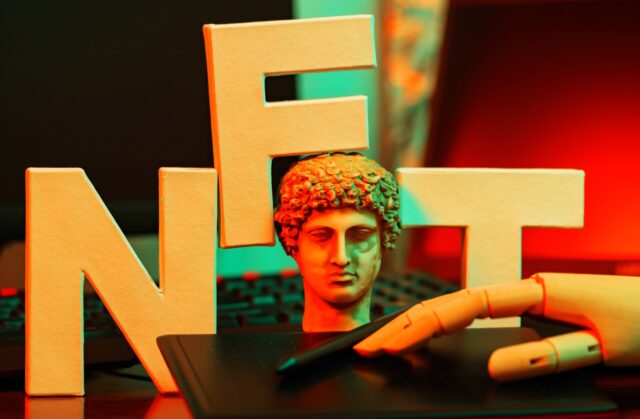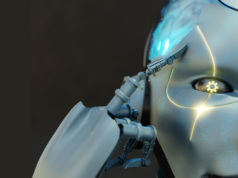
Are you looking to learn about the rising trend of Non-Fungible Tokens and how they are revolutionizing the art world? With their use of blockchain technology, NFTs have quickly become a popular tool for artists to store, authenticate, and even sell their digital work.
Introduction to NFTs
Non-Fungible Tokens (NFTs) are making headlines in the art world as digital collectibles. These tokens allow a unique piece of work to be documented on the blockchain, providing security and assurance that no other copy exists in the universe. Bryan Legend News reports that by verifying ownership via blockchain technology, it is possible to trace who the work belongs to and maintain unaltered records of changes made over time. Put simply, NFTs are digital contracts linking a unique asset, such as an image or video, to a private ledger stored on a blockchain.

NFTs and the Art World
Technology is being embraced by the art world, and NFTs provide a novel way for artists to authenticate their work and profit from it. NFTs can be used to create limited editions of artwork that are recorded on the blockchain, so artists can easily track transactions of their works and ensure they’re receiving the appropriate financial rewards. They have also opened up new avenues of creativity, such as incorporating interactive elements in artwork with new technologies like Augmented Reality (AR).
Overall, NFTs have revolutionized the art world by providing easy authentication methods for creators as well as more creative opportunities for them to explore. This has been a key factor in driving up the demand for certain works of art and creating fresh enthusiasm in the collecting space.
Benefits of NFTs
Non-fungible tokens offer users a level of security and proof that standard digital artwork can’t. Here are some of the benefits they provide.
Authenticity: NFTs allow artists to stamp verified ownership or authenticity on their artworks. Each token is unique, so the owner can rest assured that no one else has rights over the artwork.
Transparency: Every time an NFT changes hands, its owners are recorded in a public ledger and secured through encryption protocols. This ensures full transparency along every step of the transaction chain — from initial offering to secondary trading — which boosts consumer confidence in both primary and secondary markets.
Independence: Since NFT transactions take place on distributed networks and not centralized platforms, buyers need not worry about their off-chain funds or goods being censored or stifled by any third-party platform arbitrator.
Accessibility: Many traditional art galleries require appraisals of a work before it can be deemed “collectible” with certificates of authentification attached for saleability, whereas digital-only works do not need to go through this process to gain recognition as collectible items available for purchase in decentralized markets such as OpenSea marketplaces.
Reduced Risk: Although there is always some risk involved with asset investing, holding onto an NFT is much safer than holding physical art forms due to its non-fungible nature; it cannot be lost or duplicated as physical objects can be over time.

NFTs and the Music Industry
For musicians, NFTs offer a new platform for creative works to be clearly owned, distributed, and monetized without being overly complicated or expensive. By partnering with technology companies and music streaming services and others, musicians now have more control over their projects as well as direct access to their earnings from album sales and streaming royalties.
Media outlets such as websites, podcasts, or gaming media are also getting into the act by creating exclusively owned digital platforms, called “craftable worlds”. Artists can now monetize their projects in custom-made 3D environments that leverage blockchain technology for secure payment processing, ownership tracking, and royalties distribution—no third-party involvement is needed.
As these platforms become more accessible for artists worldwide and usage continues to grow it will only amplify the role NFTs play in the music industry by providing reliable media infrastructure where creators can showcase their work globally despite borders and language barriers.
NFTs and Gaming
NFTs are having a huge impact on the gaming industry by allowing game developers to create a more sustainable business model which rewards them for every item someone buys in their game with real money or cryptocurrency. Developers can create limited edition items and rewards so players can actively participate in playing games with IRL assets that have actual value outside of the game world.
The incredible potential of non-fungible tokens is good news for game developers who are looking for creative ways to monetize their projects while rewarding their players in exciting ways. With all these possibilities, it’s no surprise why more gamers are turning toward NFTs and leaping into the world of digital art collecting.

Challenges and Limitations
Firstly, the current blockchain technologies used to make NFTs are incompatible with many traditional web browsers. This restricts access to a valuable piece of art or creative work by making it difficult to load and explore on an end-user device.
Secondly, trading or purchasing digital works requires time-consuming cryptocurrency transactions that can be costly for buyers or sellers in terms of fees. Moreover, cryptocurrencies are volatile and their values can fluctuate substantially with time, thus presenting a challenge for traders in pricing their products correctly without suffering significant losses.
Additionally, the risk of fraud is still present due to the lack of verification protocols for digital artwork, which could lead to unauthorized digital counterfeiting by unscrupulous vendors who seek profit from personal data, financial information, or artworks.
Despite these challenges and limitations, NFTs have been able to establish a strong foothold in digital creativity giving a major impetus towards decentralized art production leading us into an entirely new area within the creative finance field.
Conclusion
In conclusion, as we have seen, NFTs are a revolutionary technology that has opened up new possibilities for the art world. This technology has matured over the years and is being actively used in the art industry to facilitate transactions in digital artwork.
In particular, it has enabled artists to generate additional income by creating and selling digital artwork on blockchain networks, while simultaneously increasing transparency and security with regard to these transactions. Additionally, this new way of buying and selling digital works can result in increased market liquidity for artworks and open up opportunities for new markets and investments.
All of these technological advancements point towards a bright future for the arts industry, one which will undoubtedly continue to evolve through blockchain technology.









